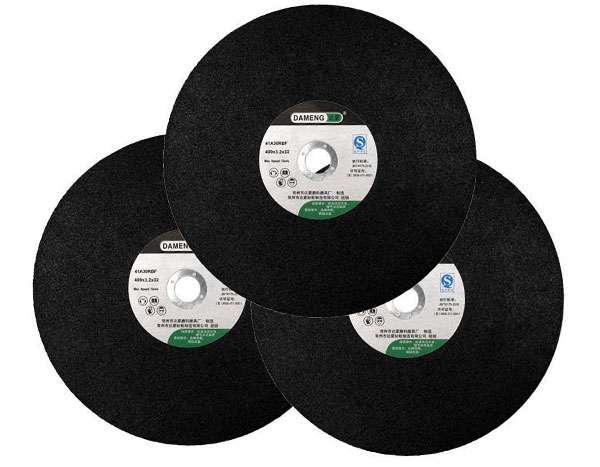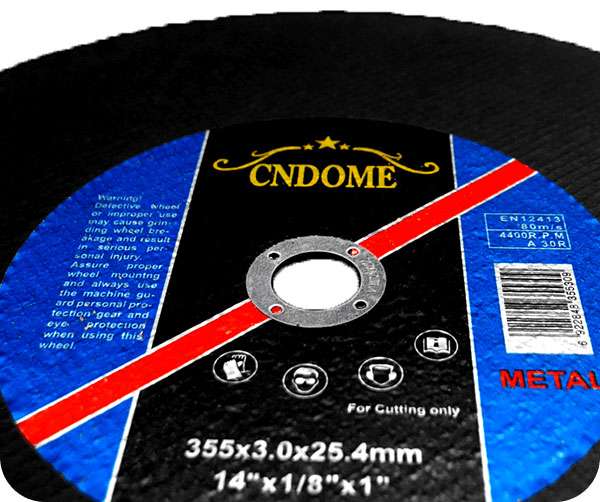In the world of fabrication and construction, where precision is paramount, having the right tools can make all the difference. One such indispensable tool is the cut-off wheel for die grinders. These small but mighty discs are designed to slice through tough materials with ease, offering unparalleled control and accuracy. In this comprehensive guide, we’ll explore everything you need to know about cut-off wheel for die grinder, from their construction and capabilities to tips for selecting the perfect wheel for your needs.
Understanding Cut-Off Wheels
Cut-off wheels, also known as cutting discs or wheels, are thin, flat discs made from abrasive materials such as aluminum oxide, silicon carbide, or diamond particles bonded together with resin. Their primary function is to cut through various materials, including metal, stone, ceramics, and plastics, with precision and efficiency. When paired with a die grinder—a handheld power tool known for its high-speed rotational motion—cut-off wheels become versatile cutting solutions suitable for a wide range of applications.
The Anatomy of a Cut-Off Wheel
Cut-off wheels may appear simple, but their design is carefully engineered to deliver optimal cutting performance. Here’s a breakdown of their key components:
- Abrasive Material: The abrasive material determines the wheel’s cutting capabilities. Aluminum oxide is commonly used for general-purpose cutting of metals, while silicon carbide is preferred for masonry and non-ferrous metals. Diamond abrasive wheels are reserved for cutting hard materials like stone and ceramics.
- Reinforcement: To provide stability and prevent the wheel from breaking under stress, cut-off wheels often feature fiberglass or other reinforcement materials embedded within the disc.
- Bonding Agent: The bonding agent holds the abrasive particles together and adheres them to the reinforcement material. Resin is the most common bonding agent used in cut-off wheels, offering excellent durability and heat resistance.
- Wheel Dimensions: Cut-off wheels come in various diameters and thicknesses to suit different die grinder models and cutting requirements. Smaller diameter wheels are ideal for intricate cuts, while larger wheels offer greater surface area coverage and longevity.
Choosing the Right Cut-Off Wheel
Selecting the appropriate cut-off wheel for your die grinder is crucial for achieving optimal results. Consider the following factors when making your selection:
- Material Compatibility: Ensure the cut-off wheel is designed to cut the material you’ll be working with, whether it’s steel, aluminum, concrete, or tile.
- Wheel Size: Match the diameter and thickness of the wheel to your die grinder’s specifications and the demands of your project. Using an improperly sized wheel can compromise performance and safety.
- Maximum RPM Rating: Check the manufacturer’s maximum RPM (revolutions per minute) rating for the cut-off wheel to ensure it is compatible with your die grinder’s speed. Exceeding the maximum RPM can cause the wheel to shatter, posing a significant safety hazard.
- Safety Features: Look for cut-off wheels that meet industry safety standards and incorporate features such as reinforced construction and a reinforced center hub for added stability and durability.
Tips for Safe and Effective Cutting
To make the most of your cut-off wheel for die grinder, follow these safety and usage tips:
- Wear Personal Protective Equipment (PPE): Always wear safety glasses, gloves, and appropriate clothing to protect yourself from debris and sparks generated during cutting.
- Secure Workpiece Properly: Ensure the workpiece is firmly clamped or secured in place to prevent movement or slippage during cutting.
- Use Light Pressure: Let the cut-off wheel do the work. Applying excessive pressure can cause the wheel to wear out prematurely and compromise cutting performance.
- Avoid Angle Grinding: While cut-off wheels are designed for straight cuts, some users may attempt to use them for angle grinding. This practice is dangerous and can lead to wheel breakage and injury. Use an appropriate grinding wheel for angle grinding tasks.
- Inspect and Replace Worn Wheels: Regularly inspect the cut-off wheel for signs of wear, damage, or fatigue, such as cracks, chips, or a reduced cutting efficiency. Replace worn or damaged wheels immediately to maintain cutting quality and safety.
Conclusion
Cut-off wheels for die grinders are indispensable tools for anyone involved in fabrication, construction, or DIY projects. With their precision cutting capabilities and versatility, these small discs pack a powerful punch, allowing users to achieve clean, accurate cuts in a wide range of materials. By understanding the anatomy of cut-off wheels, selecting the right wheel for the job, and following safety guidelines, you can master the art of precision cutting and tackle even the most challenging projects with confidence and ease.
Online Message
Minimum Order Quantity: 5,000 Pcs, 10 Pcs Free Samples.
Contact Us For More Information!
Tel/WhatsApp
+86 18796960868
[email protected]
Address



